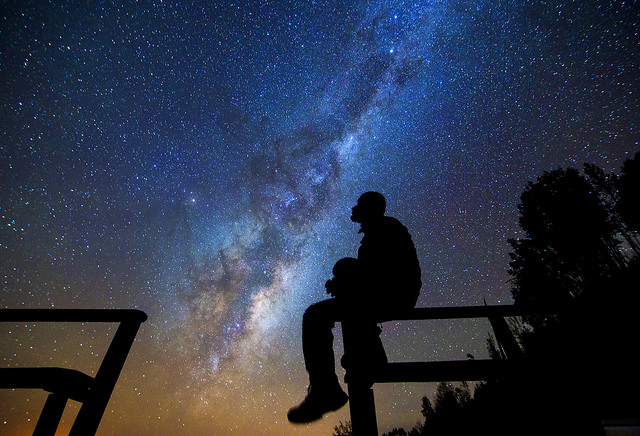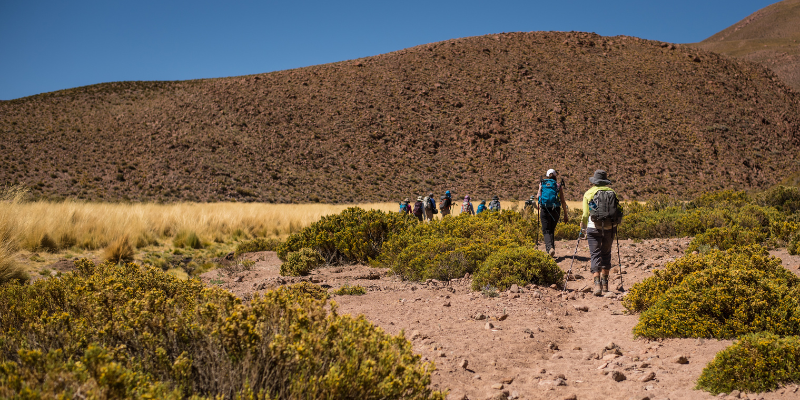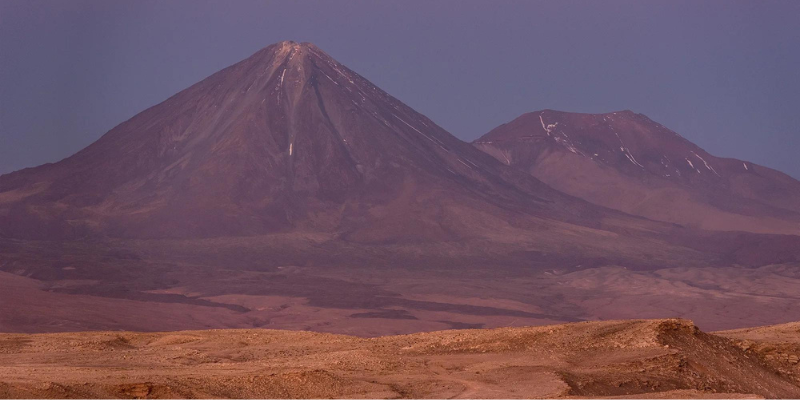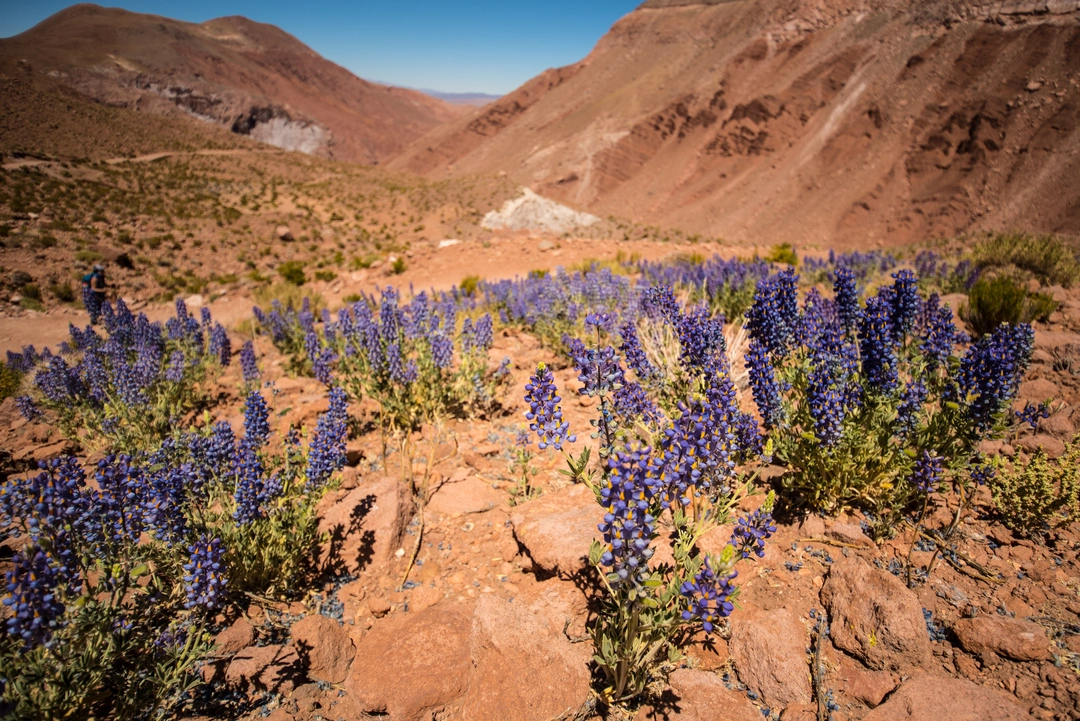The Atacama Desert in Chile’s arid North is a honeypot for visitors from all over the world, with a huge wealth of activities on offer. Hiking in the Valley of the Moon, visiting the Atacama Salt Flats, bathing in natural hot springs or exploring the nearby explosive Tatio Glaciers, a trip to the Atacama Desert can be a whirlwind of early mornings and long days as you try to soak up everything this unique region has to offer. So it’s easy to miss one of the most spectacular (and free!) attractions around, when all you need to do is to wait for the sun to set, take a break from the mad rush, and look up.
Here’s our introduction to stargazing in the Atacama Desert, to help you make the most of your trip!

Why the Atacama?
If you go outside your home after dark tonight, you can look up and see exactly the same sky from there (well, not quite if you live in the Northern Hemisphere, we’ll get to that). So if you’re going to travel all the way to the Atacama Desert you’re going to want to be sure it’s worth it. Take it from us, it is! Or better still, take it from the hundreds of scientists and astronomers working at the Paranal Observatory, La Silla Observatory and Chajnantor Observatory, which have all be set up in the area to take advantage of this ideal viewing location.
The Atacama Desert benefits from a unique combination of happy circumstances that makes it one of the best places in the world for a spot of stargazing. Its high altitude (around 2500m above sea level) may cause some mild altitude sickness, but it also brings you physically closer to the sky’s embrace. Being a desert, the region is also sparsely populated, meaning there’s less light pollution from human activities and settlements and the stars stand out all the more in the darkness. Finally, since there’s not much rain in these parts, there also aren’t as many clouds looming over the Atacama Desert as there are in many other parts of the world. This leaves the heavens wide open with a view right into the heart of the Milky Way.
A Different Point of View
We mentioned above that the sky you see in Chile isn’t exactly the same as the sky you see at home; in fact, it’s filled with many more constellations and its stars are much brighter. Whilst the Northern Hemisphere points towards the outer edges of the Milky Way, the Southern Hemisphere of planet Earth faces directly into the Milky Way’s galactic centre with a view of billions of stars. So if the Atacama Desert sky looks like it’s filled with more stars than you’ve ever seen before, that’s because it really is.
The white stripe of the Milky Way stretches across the sky wherever you are in the world. But because the sky is even brighter in the Southern Hemisphere, and the dark spaces in between appear even darker, the effect is even more impressive from Chile.
What to Look Out For
In the Atacama Desert you’ll be able to see some - although not all - of the constellations you’re familiar with from home, depending on the time of year, and they may not look exactly the same. But being on the other side of the Earth from the Northern Hemisphere you’ll also have a view of some constellations and stars that aren’t visible at all elsewhere. Here are some of the most impressive:
The Southern Cross: The Southern Cross is a constellation so famous on this side of the world that it appears on the flags of both New Zealand and Australia, and yet many from the North have never even set eyes on it.
Vela: This is another constellation that means “ship’s sails” in Latin. Vela is home to the star Velorum, which is a very bright supergiant.
The Jewel Box Cluster: This cluster of stars lies within the Southern Cross and is packed full of brightly coloured stars. If you’re used to plain old white stars, the red and blue supergiants of this cluster will be a real treat. It’s easy to see where it got its name.
Omega Centauri: This cluster sits next to the Jewel Box and is the second brightest to be seen anywhere in the sky. It is the largest cluster of stars orbiting the center of the Milky Way, and as you can imagine, it looks pretty special through a telescope.
Eta Carinae Nebula: This bright nebula is home to one of the most exciting stars in the Milky Way because it’s very unstable. Experts think that the Eta Carinae will be the next star to die in a stellar supernova explosion!
When to Visit
Stargazing in the Atacama Desert is a great activity at any time of year. While there’s less chance of cloud cover during the southern mid-summer of January and February, some of the most dramatic constellations pass overhead during the southern winter between May and July. There isn’t too much difference in temperatures in the Atacama Desert between the summer and winter months as it’s not too far from the equator, but the nights will be very cold no matter what time of year you choose.
What to Bring
-
Binoculars: If you’re just starting out in the world of stargazing binoculars tend to be much cheaper than telescopes and are far easier to pack!
-
A camera: You’ll want to take photos to remember just how amazing the sky looks.
-
Warm clothes: The desert can be bitterly cold at night and it would be a shame to spend your trip so cold that you can’t enjoy the sights. Wrap warmly in plenty of layers, including thick gloves for your hands and boots for walking on uneven terrain.
.jpg?width=1500&name=Stars%20in%20the%20Atacama%20Desert%20(3).jpg)
Check out Cascada’s selection of tours in the Atacama and Altiplano region for more inspiration on things to do in this unforgettable place.















